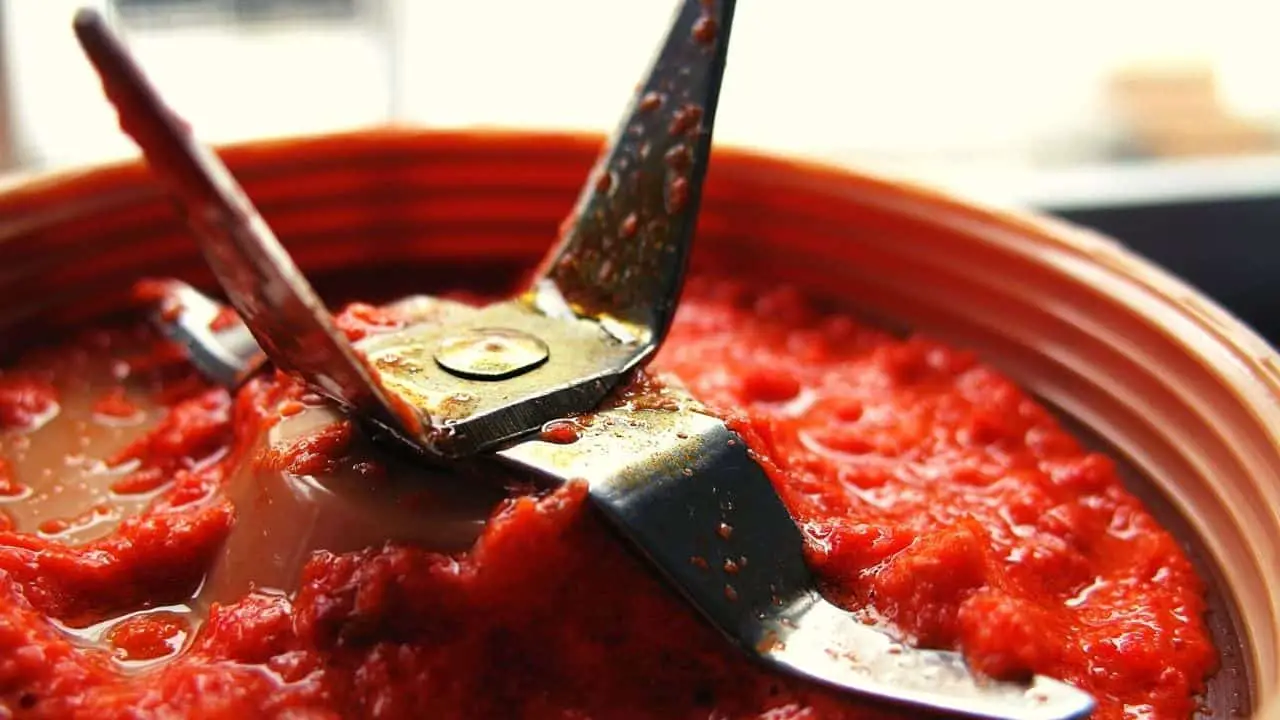Broadly speaking, Blenders and Food Processors do the same job. They pulverize food into various consistencies of mush.
Do you know what else does that same job? A HAMMER.
Hammers are excellent for dismantling items of food into their slushy elements.
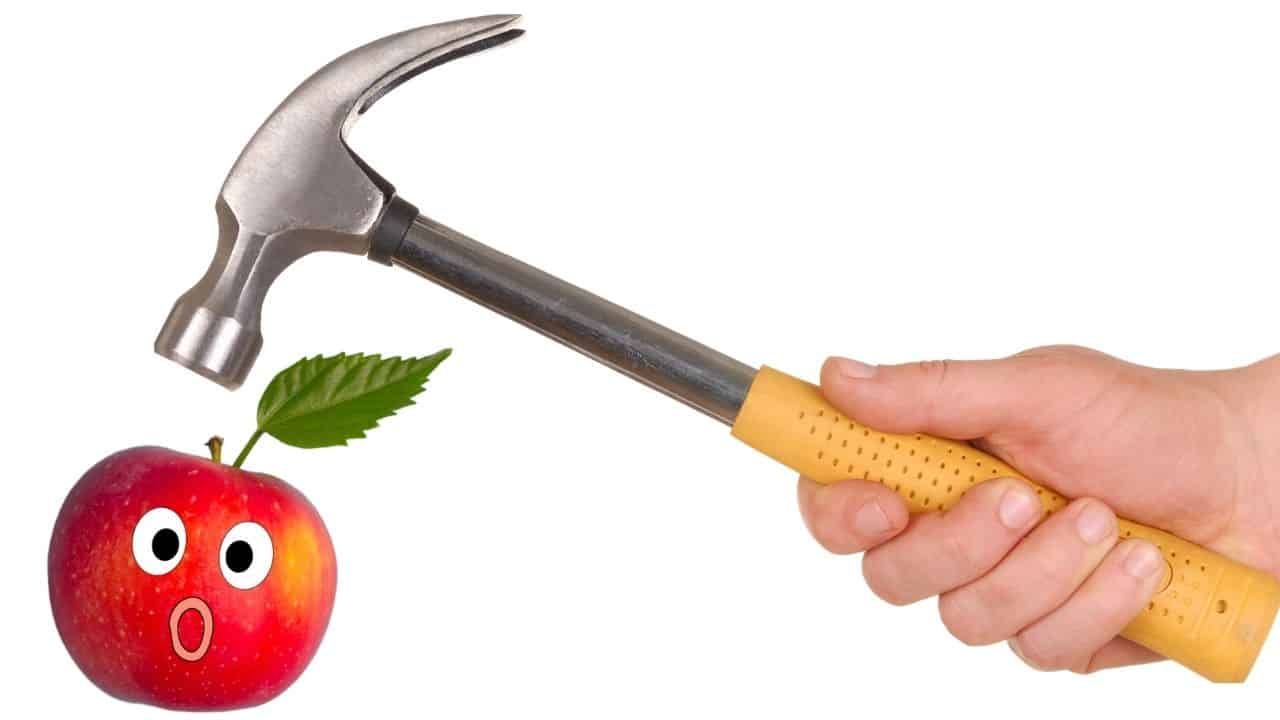
I don’t use the hammer method, though, as:
a) I don’t like having large holes in my kitchen counter.
b) It’s quite messy.
And most important of all:
c) I’m no longer a 17-year-old culinary savage and realize that making good food requires the right tools.
Part of becoming a better cook (and an adult, funnily enough) is acknowledging that details matter.
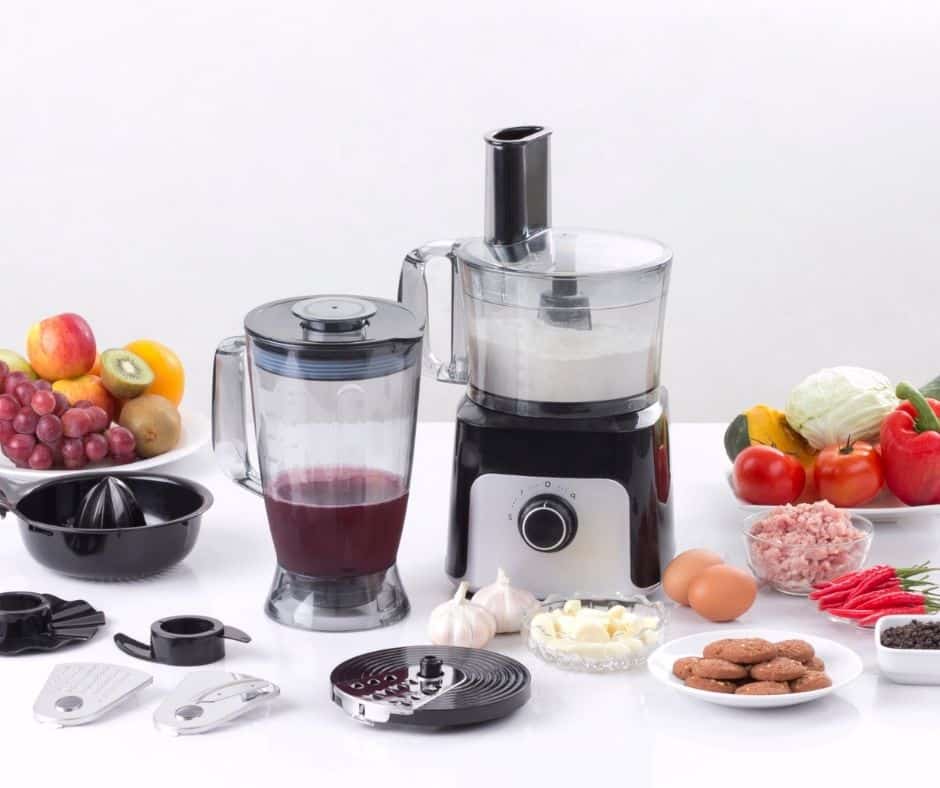
As I’ve gotten older, I’ve come to appreciate that there is a big difference between getting the job done and achieving great results.
This is why my kitchen houses both a Blender and a Food Processor.
(And why my hammer is back where it belongs – in the garage.)
Do You Need Both?
Not necessarily. But you do need to be aware that Blenders and Food Processors are not interchangeable much of the time.
Although they both make a racket and look similar, each serves its own special purpose in your food prep arsenal.
Knowing when to use one over the other can not only help you make better food but also prevent problems further down the line (blade-breaking-shaped problems).
What Is The Difference Between a Blender And a Food Processor, then?
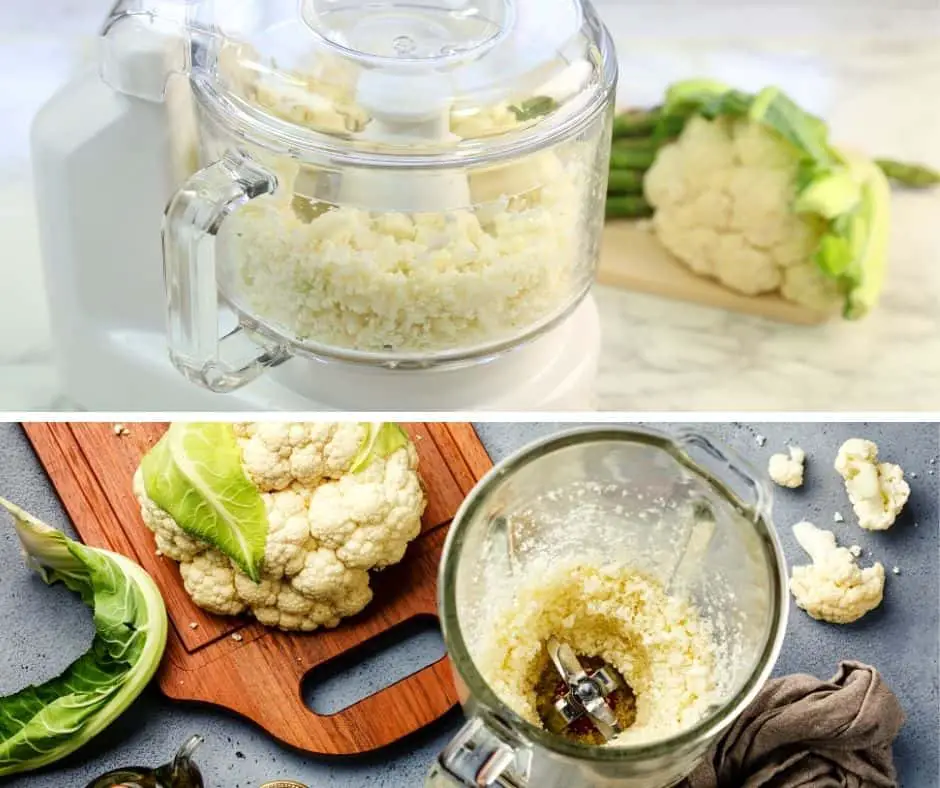
In the confusing world of kitchen mixing appliances, there is no one universal difference that separates these two devices. As is life.So instead, we can look at the main features that differentiate the two:
What Is A Blender Good For?
A standard countertop blender is generally meant for blending, pureeing, and liquifying. It works best with watery, softer ingredients such as fruit and lighter vegetables and is therefore ideal for making smoothies, shakes, or creamy soups and sauces.
Most blenders, with the exception of an immersion blender, with power over 500 watts, can handle ice well, providing you don’t feed them mammoth Titantic-sinking chunks of the stuff.
When To Use A Food Processor?
A Food Processor is designed for more intensive, ‘heavy-duty’ mixing, chopping, and slicing jobs that involve denser items of food. Unlike a Blender, it works well with drier ingredients like dough and tougher vegetables. A good food processor is like having an extra pair of hands in the kitchen and gives you the option to chop, peel, grate, shred, slice, mince, whisk and knead.
So, Can A Food Processor Be Used As A Blender?
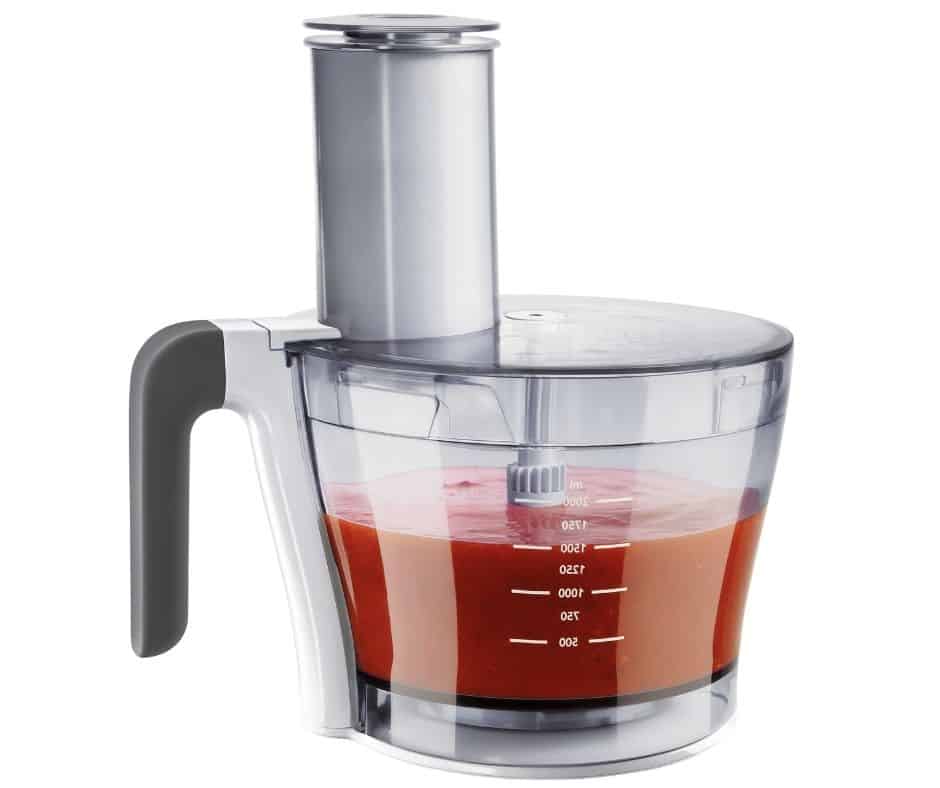
On a basic level, yes, food processors and blenders work relatively the same way; both appliances have sharp spinning blades capable of blending food. A food processor can perform a broad range of functions, including everything that a blender can accomplish.
Below is a quick list of the capabilities of each appliance.
Cheat Sheet:
Blender
- Smoothies
- Shakes
- Juices
- Sauces
- Soups
- Dressings
- Baby Food
Food Processor
Can accomplish evening in the list above, inducing:
- Shredded, chopped, and sliced vegetables
- Chopped Nuts
- Purees
- Doughs and Crusts
- Cake batter
- Pasta dough
- Mincemeat
- Shredded cheese
- Oat flour
- Nut at seed butters
- Powdered sugar
- Whipped cream
Comparing The Build And Design Of Each Appliance

Most countertop blenders have a square or round jug-like container (or “pitcher”) as the main mixing compartment. The built-in blades are generally small and sit at the bottom of the jug.
This design simple and ensures ingredients are funneled down to the blades (by creating a vortex), and makes for quick and easy pouring. In recent years, the market has seen an increase in “single serving” style blenders that use a portable shake bottle as the blending compartment.
These are very convenient for frequent, on-the-go drinkers, and don’t hog all the space in the dishwasher (which is always a bonus.)
Food processors are chunkier, more complex units, carrying different types of interchangeable blades, disks, and whisks on a central rotating pillar. They have wider containers (or “work bowl”), usually with a chute for adding ingredients during the mixing process.
Many Food Processors on the market come bundled with alternative blades, attachments, and chopping accessories, making them adaptable to various mixing tasks.
Should You Buy A Food Processor Or A Blender?
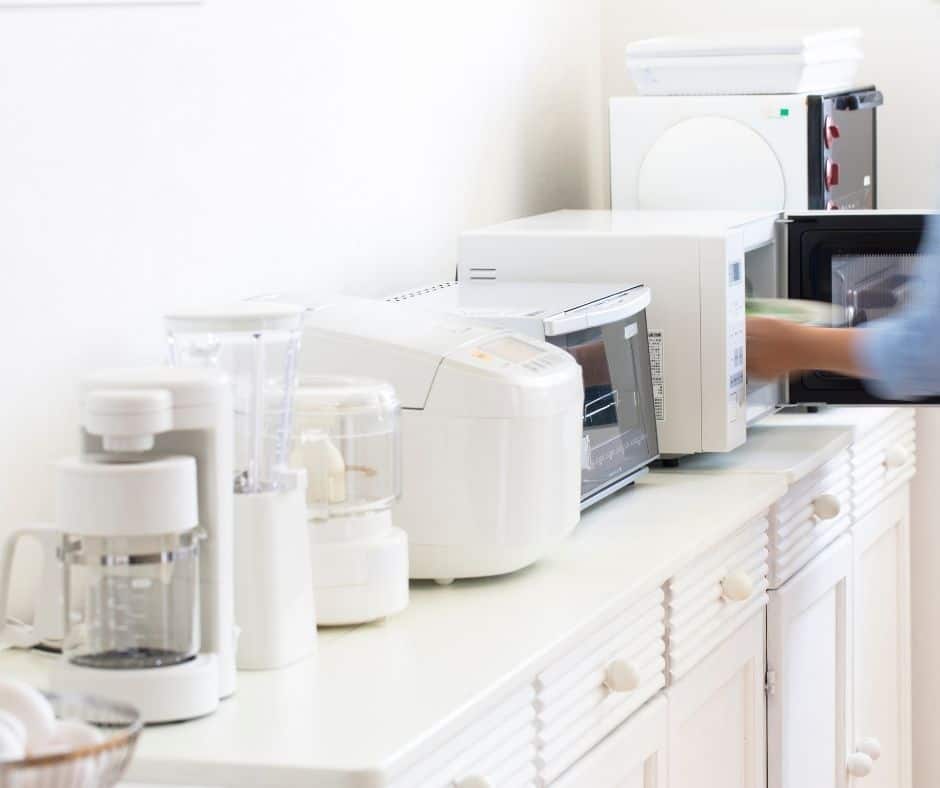
Blenders are aimed mostly towards the health and fitness crowd. If you’re after a quick smoothie or shake after you’ve got back from the gym, then a blender is likely all you need.
Food Processors are meant for bakers, cooks, chefs, and pseudo-chefs (like yours truly). If you’re making a cake or cooking up a family feast from scratch, experimenting and trying out new recipes then it’s probably that a food processor that can really speed things up for you.
However, if you have a sharp knife, whisk, and smasher, you can prepare pretty much any recipe without the fancy kitchen appliance.
Few More Points Worth Mentioning…
Although there are low-end and high-end versions of both appliances, Blenders tend to be cheaper.
Without a dishwasher, a blender tends to be easier and quicker to clean. Out of necessity, Blenders have more powerful motors (a smoother texture requires more Oomph) and therefore a lot noisier.
Faster isn’t always better, though; Food Processors are intentionally designed to be more gentle.
There are also some impressive looking hybrid type devices on the market that want to be everything your heart could possibly desire; Blender, Food Processor, Juicer, Mixer, Grinder, Cleaner, Lover, kind of like the one below:
TAP ON IMAGE TO CHECK PRICE
While there are certainly some excellent (and expensive) all-purpose mixing behemoths out there, really good ones are few and far between. Be wary of lofty claims, and do your research before buying any machine that promises to do it all. It’s better to get a machine that does one job well than one, which is average at a lot of things.
Happy Blending!
